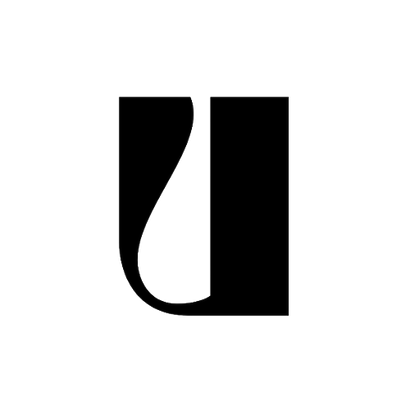Scanners have come a long way since their inception in the 1980s. They have evolved from bulky, expensive devices that were only used by professionals to affordable and compact machines that are used by both individuals and businesses. With the rise of digital documentation and paperless offices, scanners have become an essential tool for many people. In this buying guide, we will discuss the important features and factors to consider when choosing a scanner that best fits your needs.
Types of Scanners
Flatbed Scanners
A flatbed scanner is a type of scanner that has a flat glass surface where you place your document or image for scanning. The document or image is placed face-down on the glass surface, and the scanner scans it from above. Flatbed scanners are ideal for scanning documents, photographs, and other flat materials. They offer high-quality scans with accurate color reproduction and good detail. Flatbed scanners are available in various sizes and resolutions, making them suitable for personal or professional use. They are easy to use, and the scanning process is straightforward. However, flatbed scanners can take up a lot of desk space and are not ideal for scanning multiple pages quickly.

Sheet-fed Scanners
A sheet-fed scanner is a type of scanner that has a feeder that allows you to scan multiple pages at once. The document or image is fed through the scanner, and each page is scanned individually. Sheet-fed scanners are ideal for scanning large volumes of documents quickly and efficiently. They are available in various sizes and resolutions, making them suitable for personal or professional use. Sheet-fed scanners are compact and take up less desk space than flatbed scanners. They are also faster than flatbed scanners when it comes to scanning multiple pages. However, sheet-fed scanners may not offer the same level of image quality as flatbed scanners, and they may not be suitable for scanning certain types of materials.

Resolution
Resolution is an important factor to consider when choosing a scanner. The resolution determines the quality and detail of the scanned image. The higher the resolution, the better the image quality. If you are scanning documents or images for personal use, a resolution of 300 dpi (dots per inch) is adequate. However, if you are scanning images for professional use, a resolution of 600 dpi or higher may be necessary.
Connectivity
Scanners can connect to your computer in various ways, including USB, Ethernet, and Wi-Fi. USB is the most common way to connect a scanner to a computer, but Ethernet and Wi-Fi connections are becoming more popular. Wi-Fi scanners are ideal for those who need to scan documents from their smartphone or tablet.
Software
The software that comes with the scanner can have a significant impact on the usability and functionality of the scanner. Most scanners come with software that allows you to edit, organize, and share your scanned images. Look for scanners that come with software that is easy to use and has features that meet your needs.
Size and Portability
The size of the scanner is an important factor to consider if you have limited desk space. Flatbed scanners can be quite bulky, while sheet-fed scanners are generally more compact. If you need to scan documents while on the go, look for a portable scanner that is lightweight and easy to carry.
Price
The price of a scanner can vary greatly depending on the features and quality of the device. Flatbed scanners are generally less expensive than sheet-fed scanners. However, sheet-fed scanners can save you time and money in the long run if you need to scan a large volume of documents regularly. Consider your budget and needs before making a purchase.
Conclusion
Choosing the right scanner can be a daunting task, but considering the factors discussed in this guide will help you make an informed decision. Determine the type of scanner that best fits your needs, consider the resolution and connectivity options, look for software that meets your needs, and consider the size and portability of the scanner. With the right scanner, you can easily and efficiently scan and organize your documents and images.
FAQ
1. What is the difference between a flatbed scanner and a sheet-fed scanner?
- A flatbed scanner has a flat glass surface where you place your document or image for scanning, while a sheet-fed scanner has a feeder that allows you to scan multiple pages at once. Flatbed scanners are ideal for scanning documents, photographs, and other flat materials, while sheet-fed scanners are ideal for scanning large volumes of documents quickly and efficiently.
2. What resolution do I need for my scanner?
- The resolution you need depends on what you will be scanning. If you are scanning documents or images for personal use, a resolution of 300 dpi (dots per inch) is adequate. However, if you are scanning images for professional use, a resolution of 600 dpi or higher may be necessary.
3. Can I scan documents directly to my email or cloud storage?
- Yes, many scanners now offer the option to scan directly to your email or cloud storage. This is a convenient feature that allows you to easily save and share your scanned documents.
4. Do I need special software to use my scanner?
- Most scanners come with software that allows you to edit, organize, and share your scanned images. However, some scanners may require you to download additional software to use certain features. Be sure to check the specifications of the scanner you are interested in to see what software is included and what additional software may be needed.
5. Can I scan photos and negatives with my scanner?
- Some scanners are specifically designed for scanning photos and negatives, while others may not offer this feature. If you plan on scanning photos or negatives, be sure to check the specifications of the scanner you are interested in to see if it is capable of this type of scanning.



